The unraveling of Henrik Vibskov’s work is stimulus for all our senses. The esoteric work
presented season upon season leaves us reminiscing the legacy of many a great artists
that radically changed the fashion scene over the decades. Vibskov offers a narrative that
compels us to step away from our world of instant gratification. Although fashion by nature
is a transient thing, one cannot deny or negate the effort that goes into the makeup of each
garment. The democratisation of ‘luxury fashion’ – whatever that means in todays troubled
times- to the reign of a quick paced fast fashion industry, leave many seasoned designers
perplexed about ways to communicate to audiences the value of skill and artistry that goes
into each piece of work. Is it possible to make a generation bred on instant gratification,
see the value in art and fashion as it once was? Maiken Lorentz, editor-in-chief of The Selectist
unpicks the bewildering mind of the creator- Henrik Vibskov
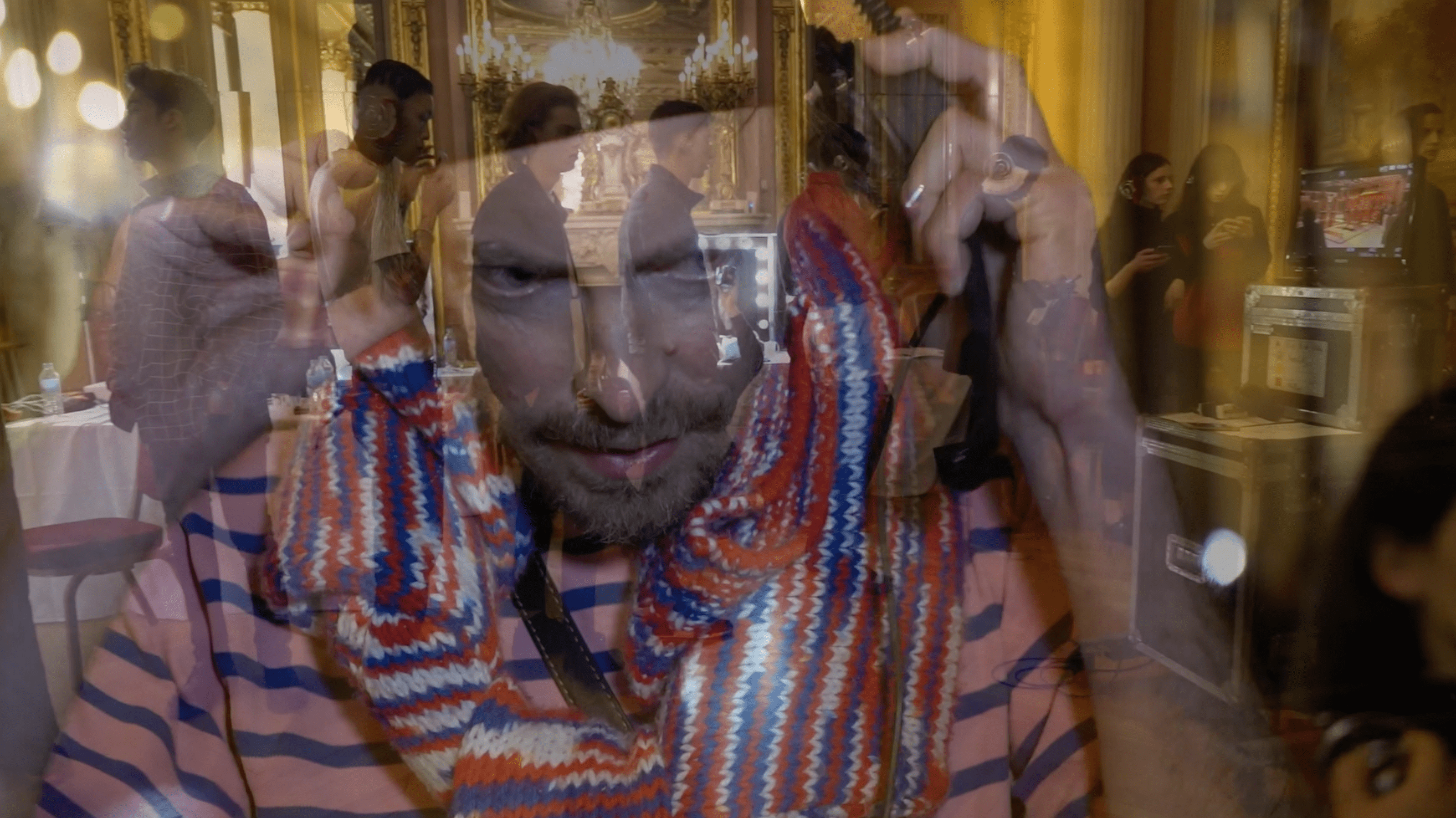
Maiki: Thank you for taking the time to chat with us, could you tell us a little about where did you get
your inspiration for this collection from?
Henrik: It all started when my body was so stiff because of various kinds of sport activities. I complained
to my girlfriend about sore muscles and she suggested I try yoga to stretch out the muscles to help
relieve pain. I was a bit unsure as this was not something I had tried before. So I thought maybe
we could use our studio space and start our own little yoga space, making it easier for me to join
in. So since then I’ve started yoga with my team. Coming to the concept of the show; we looked
into this new obsession with extreme sports which – fifteen years ago – seemed to be reserved to
leader of the pack/sport dudes, and all of a sudden everyone seems to be into it – including
peoples grandfathers running half marathons. We began to discuss what was causing this
phenomenon and it seemed to us that this was coming from a deeper rooted desire to gain control.
We thought it might be because of the way the world currently is, where one questions what you
can trust, be it political, religious or other issues that seem to be a bit out of reach. Everything you
hear now is either fake news or a conspiracy. In all of this, how can mankind/individual control
himself? This could be one of the reasons because the only thing you can control is yourself and
control your body. The rest of the world is unsure.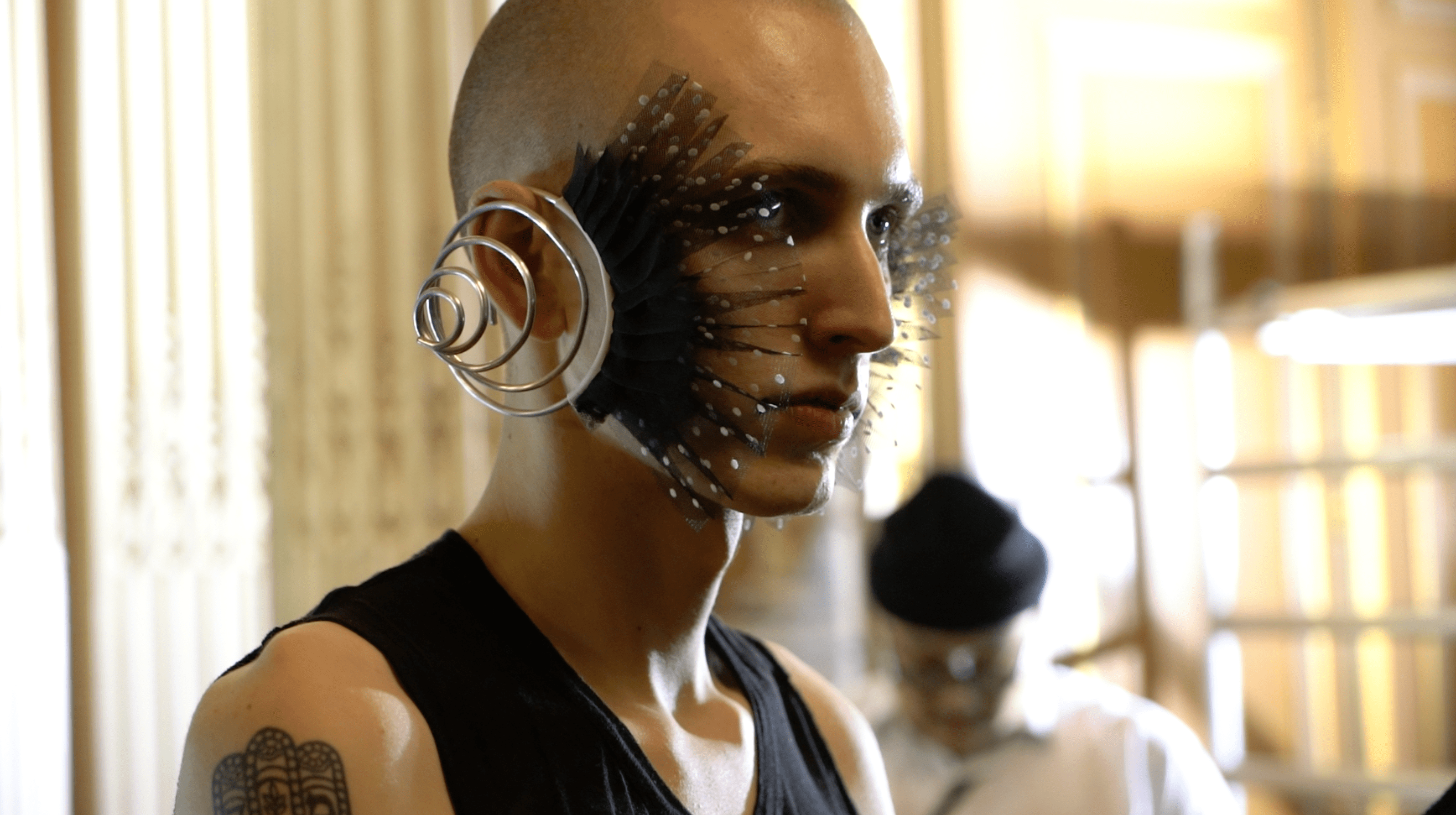
M: We noticed the set up was quite unique, we get the bit about yoga, although we don’t seem to
understand the bolsters attached to the performers?
H: Asterix and Obelix (both chuckle) Do you remember how Obelix carries around this massive
stone? I had this image in my mind while I would observe the yoga classes in progress and
happened to make a connection. Thats where the idea of bolsters strapped to yogi’s came about.
This would also then come across as “extreme yoga’ or perhaps crossfit; some of the crazy things
people have been getting up to. But all these elements are then also incorporated into the designs
for this collection, for example the symbolism of kites and how it is possible only to control with a
single string which is why we incorporated into the design.
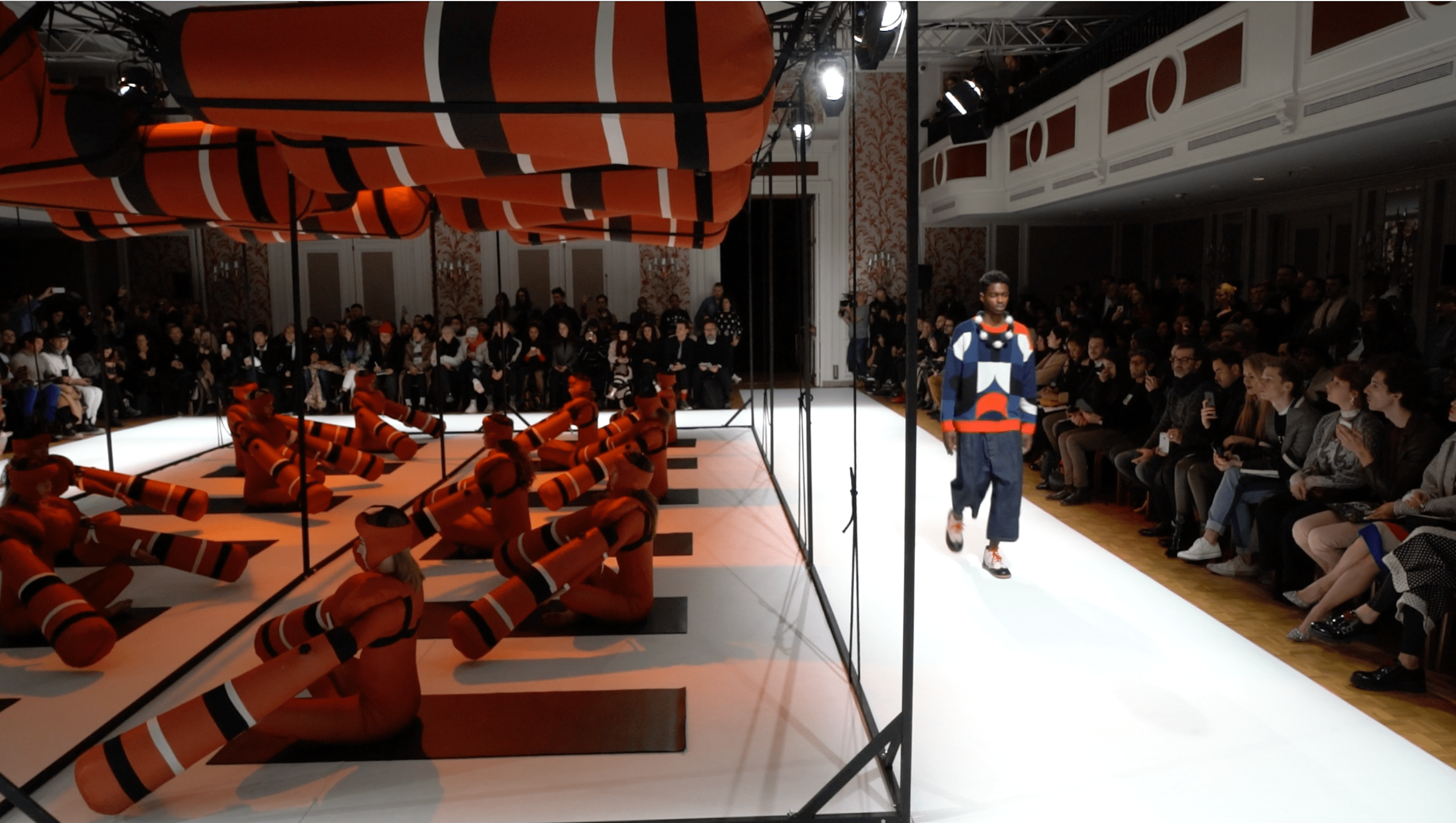
M: Your creative process is so endearing, a simple idea always seems to lead to such a profound
journey of artistic discovery, what drives this?
H: When we develop a new collection, we have to create about 40 – 50 designs that can live within
woven textiles, embroidery, print, knit structures and every possible way that we can work with the
fabrics, hence it is so much easier to develop these ideas when we have a clear concept and when
these pieces are put together, it all makes so much sense after the show and when all these
questions about where the inspiration comes from begin to make sense to me.
M: You also accessorised the models with very interesting spiralled ear pieces. Could you tell us a
little about that?
H: Yes! They represent spiralled audio ear pieces. They’re symbolic of how our ears are filled with
plenty of information- but can you trust it? Are they just various methods adopted by
establishments to control people, but it could also be mankind trying to get back this control, taking
us back to the idea of using extreme sports as a chance to to regain control over ourselves, our
bodies and our lives.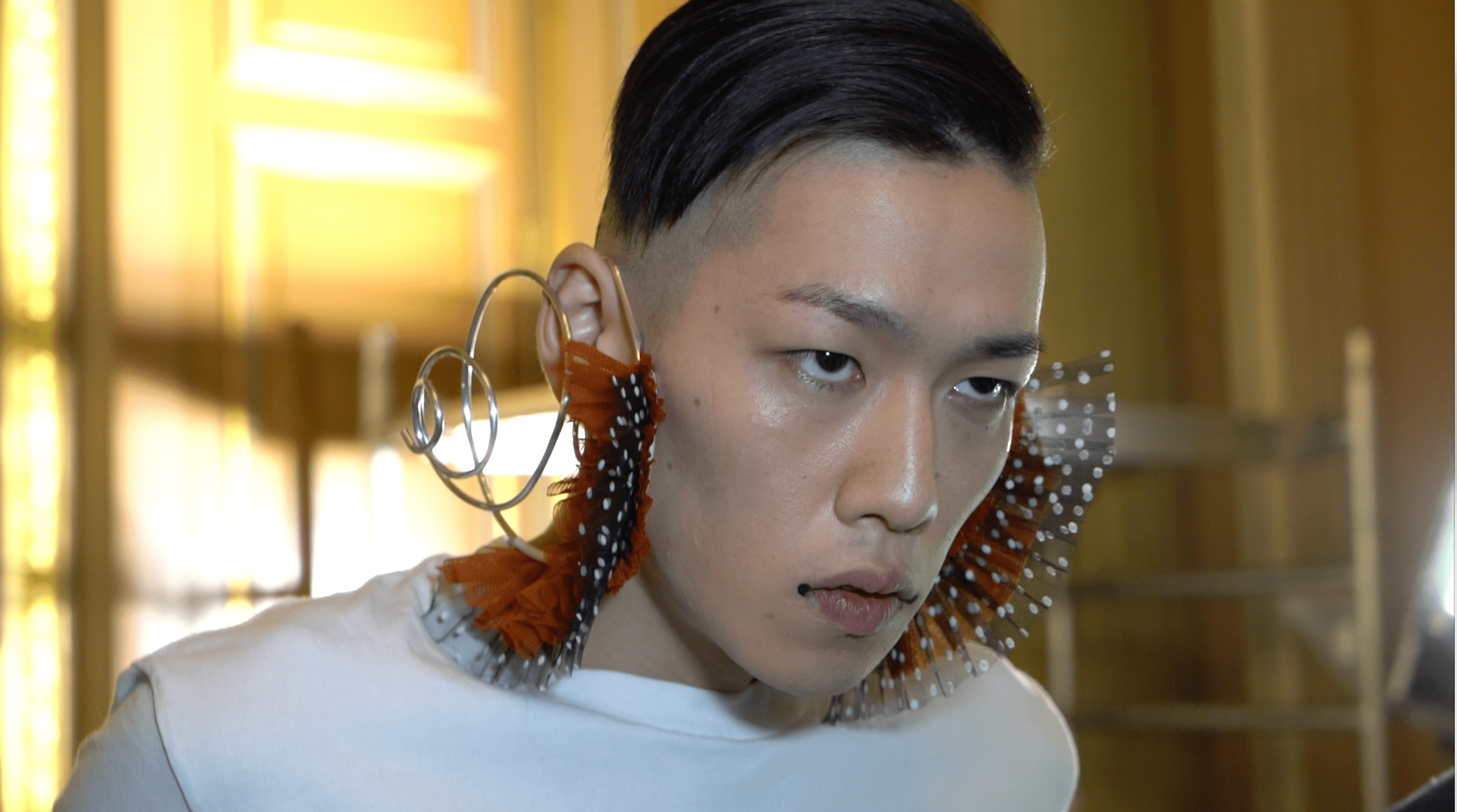
M: You’re notorious for casting models minutes before your shows, how did you get on this time
around?
H: One guy is in the show, because his mum gave me a call. There was a girl I dated
when I was in Central Saint Martens and she had a little nephew. So i’ve actually known this boy
since he was 5 or around that age- and all of sudden he’s grown up and he’s a model. So my ex’s
sister gives me a call saying ‘hey my son is in Paris and is having a hard time, could you use him?’
So there you go, there was a bit of a friends and family arrangement.
M: So this isn’t like last time, where you picked up people from the street?
H: No no, some definitely were street casted. But there were also some Koreans that we’ve been
working with for the last couple of times.
M: Can you tell us a little about the necklace accessories?
H: We have a knitting machine in our studio. A girl specialised in a special knitting technique would commute every
morning from Sweden to Denmark. She’d create all kinds of shapes and she uses plastic fibres to
create bubbles and then strings them together. In reality it is a very technical process but people
just think they’re just a bunch of balls strung together. Its ’s perceived to be such a simple thing to
achieve although it is a very complex process. We also used this technique to build the sweaters
with the bulging polkadots.
M: We’ve noticed a lot of polka dots in your work. Where does the inspiration come from?
H: Thats a good question! I just like contrast. I think they could be stripes,dots, triangles or
whatever patters. But I also like dots, I don’t know if its something I do often but, yeah, I do like
dots.
M: Are you still into music and your band Trentemøller?
H: After I had my second child, I decided to put it on hold. I was on tour for six – seven years and I
thought it might be time to give it a break. When you’re on tour, its great for the first 3 days and the
rest of the month is a bit questionable and it’s easy to party more than necessary. I also realised
that relationships are so important and although I liked playing, it was more meaningful if someone
I actually cared about were to come see it. I don’t tour, but I still play. I have been playing for 34
years.
M: Henrik thank you for chatting with us and sharing with us your creative process and the
happenings of your workshop and life.
By Pancham Hariharan
Chat by Maiken Lorentz
Video and edit by Franck Renoir
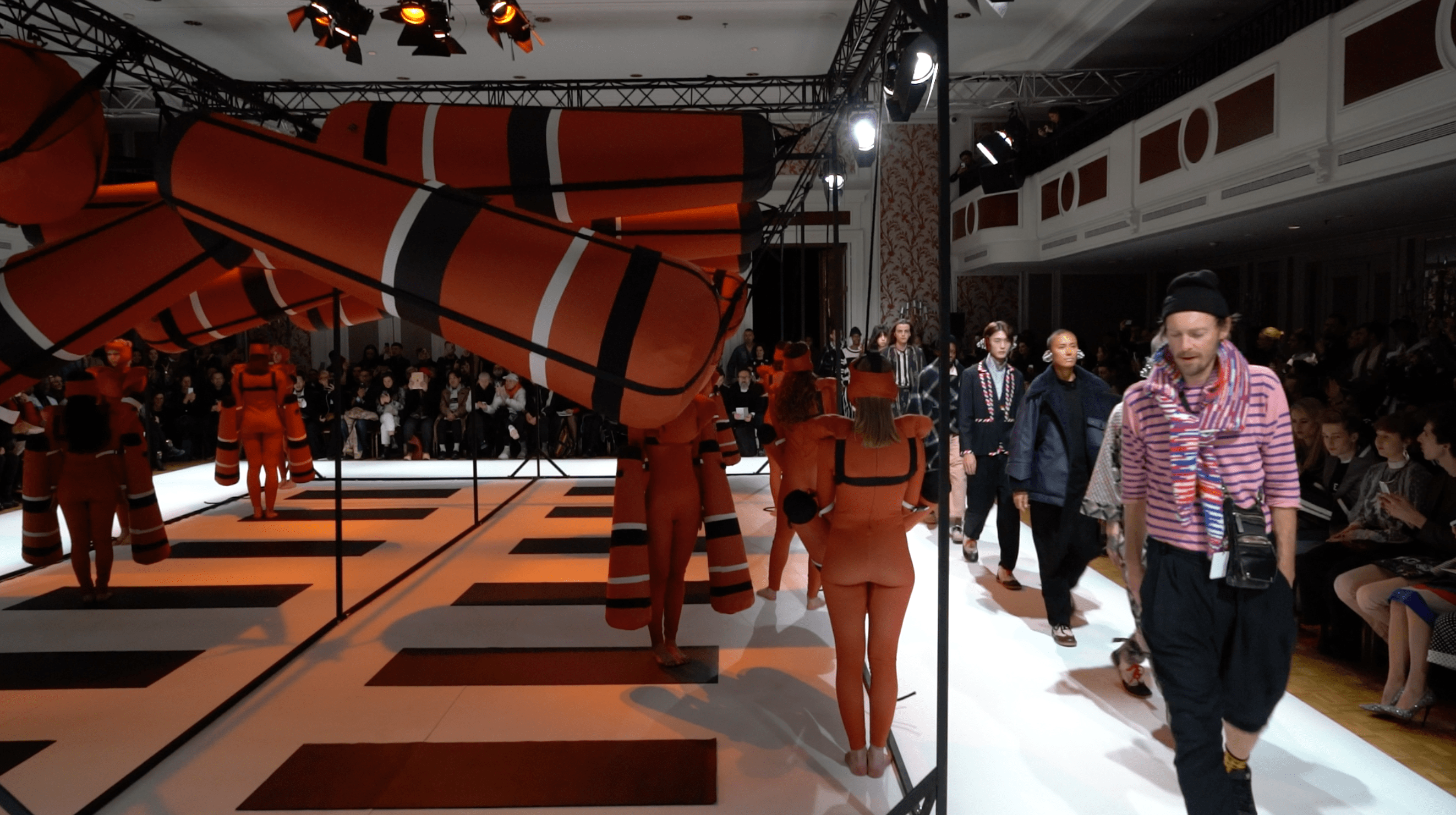
No Comments